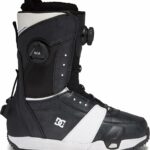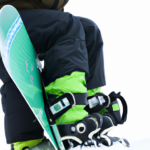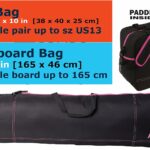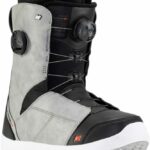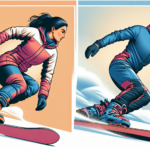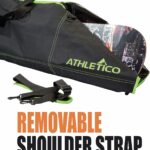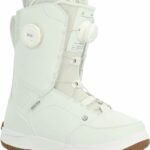Strapping on a new pair of snowboard boots and hitting the white-capped slopes is a thrilling adventure. As you embark on this journey, it’s essential to question: how tight should new snowboard boots be? Finding the perfect fit is crucial to prevent cold and numb feet, ensure optimal performance, and avoid potential injuries. This article will guide you through the process of properly securing your boots, emphasizing the importance of comfort, flexibility, and control. Here’s your guide to stepping up your snowboarding game by securing the best fit for your boots.
Understanding the Importance of Proper Boot Fit
When you’re snowboarding, it’s not just about your board – your boots play a pivotal role. You’ll spend hours in these boots, navigating tough terrains and executing difficult tricks, which is why a proper fit is crucial.
Why fit matters in snowboarding
You might have the most advanced snowboard in the world, but without well-fitted boots, your ride won’t be much fun. The right fit ensures that each movement you make transfers efficiently to your board, resulting in better control and improved performance.
Impact on performance
A poorly fitted boot can lead to lost energy and uncomfortable pressure points, hampering your performance on the slope. On the other hand, well-fitted boots provide the right balance between comfort and response, allowing you to take sharp turns, make quick stops, and perform intricate maneuvers with relative ease.
Potential risks of ill-fitting boots
Ill-fitting boots can lead to a host of issues—ranging from uncomfortable sores and blisters to unbearable pain and even serious injuries, such as fractures and sprains. Boots that are too tight can compress your foot, leading to numbness, while those that are too loose can create instability and increase the risk of falls.
Key Aspects of a Well-Fitted Snowboard Boot
To identify a well-fitted boot, you must pay attention to a handful of key aspects.
Heel hold
Your boot should be able to firmly hold your heel in place. Without adequate heel hold, your foot will lift inside the boot when you’re making turns, significantly limiting your control over the board.
Toe touch
When your knee is straight, your toes should lightly touch the boot’s front without feeling squashed. As you flex your knee forward, your toes should draw back slightly.
Flex compatibility
A boot’s flex should match your preference and ability level. Beginners usually prefer softer flex, as it allows for mistakes and is more forgiving. More experienced riders might opt for stiffer boots, which provide better response and control.
Sufficient arch support
The right boots provide sufficient arch support, preventing foot fatigue and increasing stability. Inadequate arch support can lead to overpronation or oversupination, both of which can cause discomfort when snowboarding.
Correct width
The boot should fit snugly around your foot without squeezing it. If the boot is too tight, it can constrict your foot and impair circulation. If it’s too loose, your foot will move inside the boots, hindering control over your snowboard.
Determining the Right Tightness for Snowboard Boots
To perform at your best on the slope, you need boots that are just the right tightness.
Definition of an ideal tightness
Ideally, your snowboard boots should be snugly encompassing your foot, without causing discomfort or pain. As you strap into the boots, the liners will compress slightly to match the shape of your foot, providing the right level of tightness.
Factors to consider for the right tightness
When determining the right tightness, you need to consider factors like foot shape and size, riding style, and personal comfort.
Signs of an improperly tight boot
Signs that your boot might be too tight include numbness, pain, and loss of circulation in your foot. On the other hand, if your boots are too loose, you’ll experience decreased control and wiggling inside the shoes.
Comparison Between New and Broken-in Boots
As you might guess, new boots and those that are broken-in feel quite different.
Changes in tightness over time
Over time, as you wear and use the boots, the materials will stretch and mold to match your foot shape. This is why new boots generally feel tighter than ones that you’ve broken in.
How proper boot fit feels after breaking in
Once broken-in, your boots should provide a snug, glove-like fit. They should be comfortable around your entire foot, with no pressure points or excess space.
Expectations with new boots
When trying on new boots, expect them to feel a bit stiff and snug. With time and usage, they’ll soften and take the shape of your foot.
Steps to Ensure Proper Fit When Trying on New Boots
Getting the best fit involves more than just choosing the right size. Here are a few steps you can take.
Wearing the right socks
Just like with any footwear, thick, bulky socks can change the fit of the boot. It’s best to wear thin, moisture-wicking snowboarding socks when trying on new boots.
Properly lacing up the boot
When trying on the boot, make sure to lace it up properly. Lace up the boots as if you were preparing for a day on the slopes—firmly but comfortable to ensure the most accurate fit.
Standing and flexing in the boots
Stand in the boots and then flex forward, mimicking a snowboarding stance. The boots should feel secure around your foot, but not constrictive.
Solving Common Issues with Boot Tightness
Problems can arise with both too-tight and too-loose boots.
Dealing with boots that are too tight
If your boots are too tight, try a bigger size or a different model. Sometimes, heat molding and professional boot fitting services offered by many stores could solve the issue.
Addressing boots that are too loose
If your boots are too loose, first check your lacing – are your boots tightened correctly? You could also try a smaller size, denser insoles, or a narrower model.
Ways to help boots conform better to feet
Consider professional boot fitting services or heat molding, both of which can help the boot conform better to your foot shape.
Special Considerations When Choosing Snowboard Boots
A few other factors can impact the best boot for you.
Foot shape and size
A one-size-fits-all approach doesn’t work when it comes to snowboarding boots. Everyone’s feet are different in size and shape, and what works for one person might not work for another.
Preferred snowboarding style
Your riding style also plays a big role in the kind of boot you’ll need. Freestyle boots are typically softer for easier tricks, while boots for freeriding and racing have stiffer flex.
Experience level
Your experience level weighs in as well. Beginners should look for comfortable, forgiving boots (usually with a softer flex), while pros might prefer stiffer boots that offer more control.
Shop vs. Online Purchase: Things to Keep in Mind
Where to buy – this is another important factor when chasing the perfect boot fit.
Advantages of trying boots on in person
Buying in a physical store provides you with the opportunity to try on as many boots and sizes as you need to find the perfect fit. You also get instant access to professional advice from experienced salespeople.
How to ensure a good fit when purchasing online
When buying online, you need to go the extra mile to ensure a good fit. Be sure to measure your foot length and across its widest point. Do your research and check the manufacturer’s sizing guide before making a purchase.
Maintaining Your Boots for Long-Term Comfort and Performance
Once you’ve found your perfect pair of boots, it’s important to maintain them to ensure their longevity.
Routine care tips
Daily maintenance of snowboarding boots involves drying the liners out after each use, keeping the boots clean, and regularly checking for wear and tear.
Common wear and tear signs to watch out for
Keep an eye out for signs like worn-out soles, torn liners, and snapped laces—all signs that your boots may need to be repaired or replaced.
When to consider getting a new pair
Signs such as consistent discomfort and reduced performance, even after adjustment and repair, may indicate that it’s time for a new pair of boots.
Myths and Misconceptions About Snowboard Boots
Misconceptions can lead to bad boot decisions. Allow me to debunk a few.
Debunking the myth of ‘breaking in’ boots
Although boots will soften with wear, they won’t change radically. If a boot doesn’t fit in the shop, it most likely won’t fit on the slopes either, no matter how much ‘breaking-in’ you do.
The truth about boot sizes
Snowboard boot sizes are not a perfect equivalent to shoe sizes. Always try on to ensure a perfect fit, and don’t rely solely on your typical shoe size.
And there you have it – a comprehensive guide on snowboard boot fit. The right fit can mean the difference between an uncomfortable day on the hill and enjoying the ride to its fullest. So, next time you’re on the hunt for new snowboard boots, keep this guide handy, and make sure you find a pair that fits you just right.
- What Snowboard Bindings Should I Get? - January 23, 2024
- What Size Screws For Snowboard Bindings? - January 23, 2024
- How To Snowmobile On Water? - January 23, 2024

